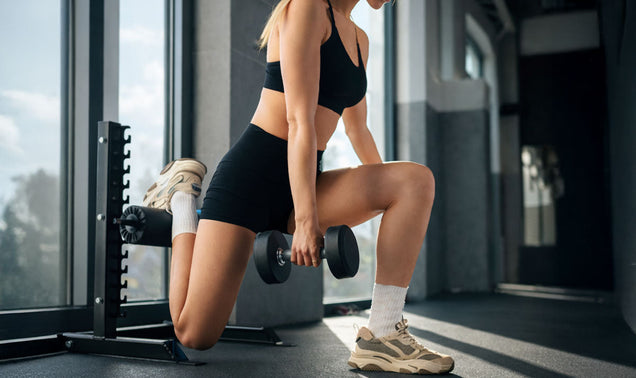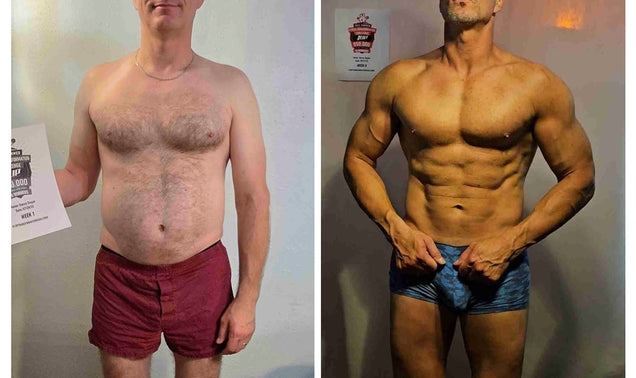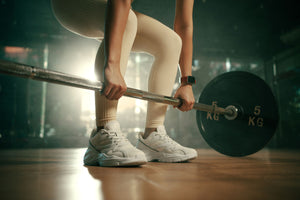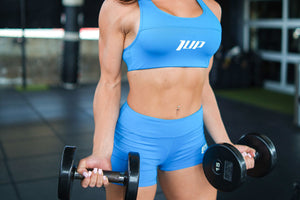“The Pump” is precious.
It is a sensation unlike any other during a workout, one that instills in you a sense of confidence, tenacity, and determination.
Arnold Schwarzenegger first romanticized the idea of the muscle pump back in the 1970s, in “Pumping Iron” when he likened the pump to that of climaxing during intercourse.
But, why is the pump such a highly sought after phenomenon? What causes it to happen and does it actually serve any benefit to your training?
We’ll answer all of that and more as we take a deep-dive into the phenomenon that is the muscle pump.
What is “The Pump”?
The pump is a physiological phenomenon wherein muscles become engorged with blood during resistance training. It’s usually achieved during workouts involving a high number of repetitions and brief periods of rest.
So, how does the pump happen?
Well, when you lift weights (or perform any style of resistance training for that matter), the heart pumps more blood to the muscles under tension. At the same time, the veins that carry blood away from the working muscles are compressed as a direct result of your muscles contracting.
However, the heart is still pumping more and more blood to your muscles, which creates a scenario similar to filling a balloon with water and making a very small hole at the end of it.
As the water continues to fill the balloon, a small amount of fluid seeps out, but to deal with the increased pressure, the balloon continues to expand, getting bigger, and bigger, and bigger due to the increased fluid in it.
The same thing more or less happens with your muscle cells.
As more and more blood is pumped to your muscles, intramuscular blood plasma increases so much that it starts to seep out of the capillaries and into the spaces between muscle cells and blood vessels called interstitial spaces.
This fluid accumulation creates an extracellular pressure gradient, which then forces a surge of plasma back into the muscle, causing blood to pool in the muscle, ending with a monstrous muscle pump.
Why is The Pump Important?
For decades it was believed that the pump was nothing more than an aesthetics (and ego) boost. However, recent studies have shown that the pump (“cellular swelling”) has more to offer than just making your muscles look bigger -- it may actually enhance muscle growth!
When you get a pump, muscles become engorged with blood, causing the cells to balloon in size (“swell”).
Your body perceives this sudden cell expansion as a threat to its structural integrity survival. In response to this threat, the muscle cell stimulates certain anabolic processes (including the upregulation of protein synthesis) while at the same time downregulating various catabolic processes.
Since muscle growth at its core occurs when muscle protein synthesis exceeds protein breakdown, anything that tilts the balance of the scale more in favor of protein synthesis over protein breakdown is beneficial for muscle growth. Getting a pump does just that, which means that the pump helps build muscle.[1]
Moreover, recent studies indicated that cellular swelling (“the pump”) and other metabolites may be an independent contributor to muscle hypertrophy, not merely a cofactor that accompanies mechanical tension or muscle damage (the other two main mechanisms of hypertrophy.[2,3]
In addition to muscle growth, getting a pump also enhances oxygen and nutrient delivery to working muscles due to the increase in blood flow that occurs during training. Increased delivery of these nutrients supports energy production (as oxygen is used to generate ATP) and faster intra-set recovery. This leads to greater performance and endurance during training and a higher total volume of work completed with more mechanical tension placed on your muscles, providing yet another means to boosting muscle growth!
4 Ways to Increase Muscle Pumps
Carbohydrates
Carbohydrates are the whipping boy of the diet world, as they’re blamed for the current obesity and diabetes epidemics. But the truth is, if you want to perform to the best of your abilities, grow bigger and stronger, and recover faster, you want carbohydrates in your diet.
In addition to their ability to boost athletic performance, carbohydrates also support bigger muscle pumps.
The reason for this is that when your body stores carbohydrates in muscle as glycogen, for every gram of glucose it stores, it also stores three grams of water.[4]
The extra intramuscular water content enhances muscle fullness, thereby giving the appearance of more shapely muscles as well as supports greater stamina and endurance.
Sodium
Similar to carbohydrates, sodium (salt) has also received a fair amount of undue criticism. Yet for hard-training gym rats, salt is one of the most important minerals you can consume as it affects everything from hydration to muscle contraction to nerve function.
It comes as no surprise then that sodium plays a pivotal role in your ability to get a muscle pump.
You see, when sodium intake is low, our bodies compensate by excreting potassium, which causes a reduction in the fluid volume of your muscle cells. However, when you consume adequate amounts of sodium, muscle cells have greater fluid volume leading to fuller-looking muscles.
As an added benefit, higher sodium intakes also enhances extracellular fluid levels, which supports the health and function of your joints and tendons.
Therefore, if you’re looking to increase your pumps during training, consider having a carb-rich salty snack before you take your pre-workout supplement. The extra carbs and salt help drive more fluid into your blood system, yielding bigger, better muscle pumps!
High Rep Training
Low rep training (3-5 reps per set) is great for building strength, and it can even help build muscle, but it’s not so great for getting a pump.
The reason for this is that low rep sets don’t involve enough contractions to create the “pooling” effect in your muscles. Plus, low rep training also involves long rest periods, which gives time for the waste metabolites to clear from your muscles and the veins carrying blood away from your muscles to relax.
Therefore, to maximize muscle pumps during training, you want to train with higher rep ranges (10-20 reps per set) with relatively short rest periods (no more than 60-75 seconds).
Supplements
In addition to the pointers we’ve described above, a number of supplements have been developed to improve blood flow and boost nitric oxide, which helps generate bigger muscle pumps!
1UP Nutrition has done the research and developed two of the best pre workouts on the market for boosting performance and pumps in 1UP for Men and 1UP for Women.
These two pre-workouts contain a powerful trio of pump-boosting in Citrulline Malate 2:1, Agmatine Sulfate, and L-Norvaline.
Citrulline Malate provides your body with the “fuel” it needs to generate nitric oxide, while agmatine and l-norvaline help combat the biological mechanisms that blunt nitric oxide production. The end result is a pump matrix that provides bigger, stronger, and longer-lasting muscle pumps.
Coupled with comprehensive energy and focus matrix, 1UP Nutrition pre workouts provide everything you need to dominate your workouts, set PRs, and obliterate the competition!
References
- Schoenfeld BJ, Contreras B. The muscle pump: potential mechanisms and applications for enhancing hypertrophic adaptations. Strength & Conditioning Journal. 2014;36(3):21-5
- de Freitas MC, Gerosa-Neto J, Zanchi NE, Lira FS, Rossi FE. Role of metabolic stress for enhancing muscle adaptations: Practical applications. World J Methodol. 2017;7(2):46-54. Published 2017 Jun 26. doi:10.5662/wjm.v7.i2.46
- Dankel SJ, Mattocks KT, Jessee MB, Buckner SL, Mouser JG, Loenneke JP. Do metabolites that are produced during resistance exercise enhance muscle hypertrophy? European journal of applied physiology. 2017;117(11):2125-35
- Fernandez-Elias, V. E., Ortega, J. F., Nelson, R. K., & Mora-Rodriguez, R. (2015). Relationship between muscle water and glycogen recovery after prolonged exercise in the heat in humans. European Journal of Applied Physiology, 115(9), 1919–1926. https://doi.org/10.1007/s00421-015-3175-z






